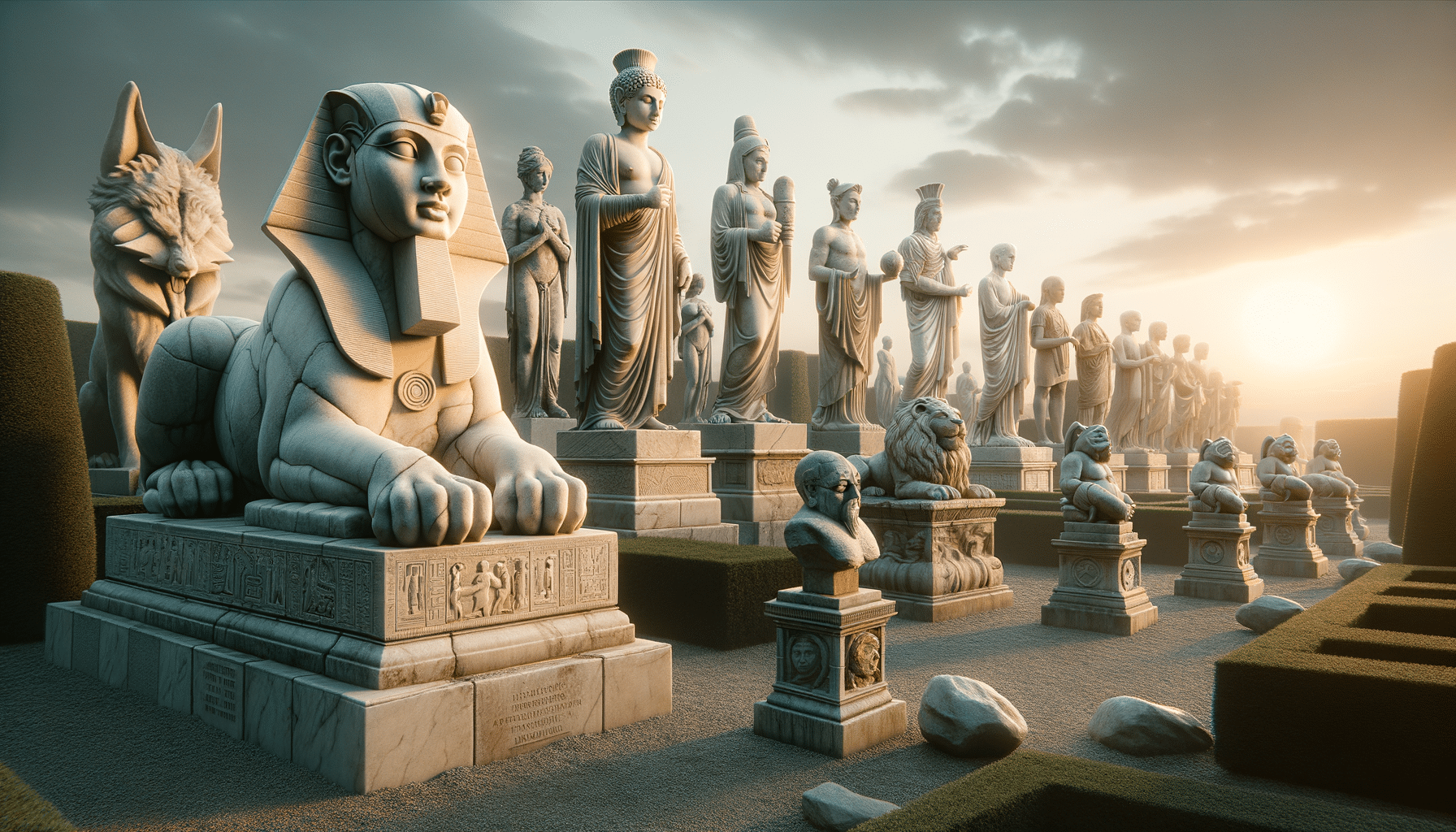The Fascinating World of Statues: Art, History, and Significance
Explore the intricate world of statues, delving into their artistic, historical, and cultural significance.

The Artistic Essence of Statues
Statues have long been a cornerstone of artistic expression, capturing the imagination and emotions of viewers through their form and presence. These three-dimensional artworks are crafted from various materials, including marble, bronze, wood, and even modern composites. Each material offers a unique texture and durability, influencing the artist’s approach and the statue’s final appearance.
Artists use statues to convey complex ideas and emotions, often reflecting the cultural and societal values of their time. For instance, ancient Greek statues are renowned for their idealized forms, celebrating human beauty and strength. In contrast, modern statues might embrace abstract forms, challenging traditional aesthetics and inviting viewers to interpret their meanings.
Moreover, statues serve as a medium for storytelling, immortalizing historical figures and mythological narratives. From the serene expressions of Buddhist statues to the dynamic poses of Renaissance sculptures, each piece tells a story, offering a glimpse into the artist’s vision and the era’s cultural ethos.
Historical Significance of Statues
The history of statues is as diverse as the cultures that created them. In ancient civilizations, statues were often used as religious icons or symbols of power. The colossal statues of pharaohs in Egypt, for instance, were not only artistic achievements but also political statements, reinforcing the divine status of the rulers.
In ancient Rome, statues played a crucial role in public life, adorning forums and public spaces. They served as reminders of civic duty and celebrated military victories. The tradition of erecting statues to honor leaders and heroes continues today, reflecting the enduring power of these monuments to inspire and commemorate.
Statues also serve as historical records, providing insights into the technological advancements and artistic trends of different periods. The intricate carvings of medieval statues, for example, reveal the era’s craftsmanship and religious devotion, while the sleek lines of Art Deco sculptures reflect the modernist movement’s emphasis on simplicity and elegance.
Cultural Impact of Statues
Beyond their artistic and historical significance, statues hold profound cultural importance. They often become cultural landmarks, attracting tourists and serving as symbols of national identity. The Statue of Liberty, for example, is not only a masterpiece of engineering but also a symbol of freedom and democracy, welcoming millions of immigrants to the United States.
In many cultures, statues are integral to religious practices and rituals. In Hinduism, statues of deities are revered as embodiments of divine energy, playing a central role in temple worship. Similarly, in Buddhism, statues of the Buddha are focal points for meditation and devotion, embodying the teachings of enlightenment and compassion.
Furthermore, statues can become focal points for social and political movements. They serve as powerful symbols of resistance or change, as seen in the toppling of statues representing colonial or oppressive figures. These acts of defiance highlight the dynamic relationship between statues and society, where art becomes a tool for dialogue and transformation.
The Evolution of Statue Design
The design of statues has evolved significantly over the centuries, reflecting changes in artistic styles, materials, and techniques. In ancient times, statues were often carved from stone or cast in bronze, with artists focusing on realistic representations of human figures and deities.
During the Renaissance, artists like Michelangelo pushed the boundaries of realism, creating statues with intricate details and lifelike expressions. This period marked a shift towards humanism, with statues celebrating the beauty and potential of the human form.
In the modern era, statue design has embraced abstraction and experimentation. Artists like Henry Moore and Constantin Brâncuși explored new forms and materials, challenging traditional notions of sculpture. Today, contemporary statues might incorporate mixed media, interactive elements, or even digital technology, reflecting the diverse and ever-changing landscape of modern art.
Preserving and Restoring Statues
Preservation and restoration are crucial aspects of maintaining the integrity and longevity of statues. Over time, exposure to the elements, pollution, and human interaction can lead to deterioration, necessitating careful conservation efforts.
Restoration involves cleaning, repairing, and sometimes reconstructing parts of a statue to return it to its original condition. This process requires a deep understanding of the materials and techniques used in the statue’s creation, as well as expertise in modern conservation methods.
Preservation also involves protecting statues from future damage, which might include applying protective coatings, controlling environmental conditions, or relocating statues to safer environments. These efforts ensure that statues continue to inspire and educate future generations, preserving their artistic, historical, and cultural significance for years to come.